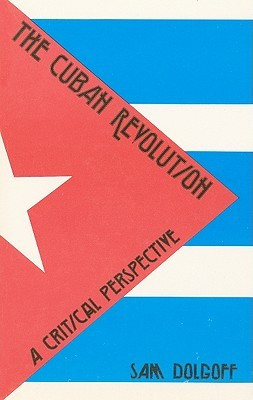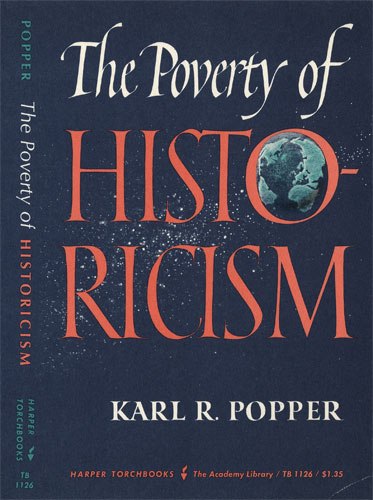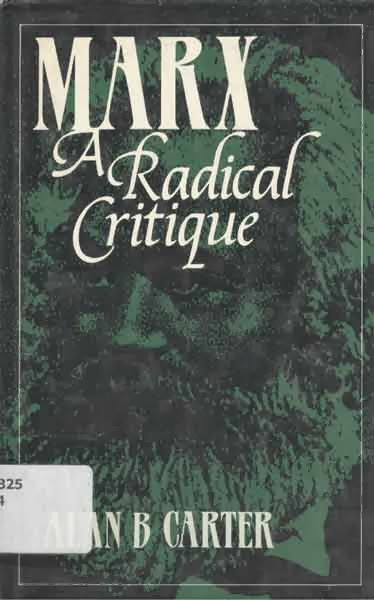
Recently Dissent magazine carried a rather lame critique of anarchism by Sheri Berman. Here I present an excellent rejoinder, posted by “Patrick” (also the author?) at For Student Power and the Black Rose Anarchist Federation website. As the article notes, Berman’s comments about the Paris Commune being an example of anarchism’s failure are particularly off the mark (for a different perspective, see my book, We Do Not Fear Anarchy – We Invoke It). As for Dissent, I can’t resist recalling an old Woody Allen joke about Dissent merging with a similar magazine, Commentary, to create a new magazine, Dissentary.

Another Day, Another Hatchet Job
Is just me, or has the quality of critiques of anarchism been getting worse lately?
Barnard Professor Sheri Berman’s contribution to Dissent’s Fall 2015 issue (“No Cheers for Anarchism”) makes it clear she holds anarchism — and anarchists — in contempt. I looked for, but sadly could not find, a well-argued reason why. Her essay is plagued by the kind of scattershot superficial analysis, innuendo, and guilt-by-association better suited to a publication like the Weekly Standard than such a storied journal of the left.
Berman’s trouble begins when she asserts a fundamental similarity between anarchists and libertarians:
Anarchists dream of a world without states, traditional political organizations, or any other structures that restrict individual freedom. Because they share such beliefs and goals with libertarians, anarchists are easily confused with them. In the American context, at least, the main distinction between the two concerns capitalism: anarchists view it as inherently coercive, while libertarians venerate it as the embodiment and guardian of individual rights. This has led the former to be viewed as left wing and the latter as right wing, but in reality, anarchists differ dramatically from other sectors of the modern left (just as libertarians differ dramatically from traditional conservatives and other factions of the modern right).
While it’s true that American libertarians essentially stole their appellation from us (“libertarian” at least in Europe still largely means anarchist), they sadly did not deign to import any of our ideas. Anarchist analysis is fundamentally social and structural, and is the common thread that links our opposition to capitalism and the state, our resistance to all forms of oppression and domination, and our proposal of common ownership of wealth and production through direct democracy. Libertarians, on the other hand, construct their world starting with the atomized individual, resting on a foundation of modern property rights: it is a thoroughly reactionary ideology.

During the late nineteenth and early twentieth century anarchism’s rejection of traditional political organizations and activity led to its involvement in various uprisings and rebellions, the most important of which was the Paris Commune.
It is strange to see Berman assert that anarchists during that time rejected “traditional political organizations and activity.” I can only assume she means electoral and party politics, which given the time period were anything but traditional. Indeed, Europe has a much longer history of strikes, revolts, and revolutions than of parliaments. Modern European political parties only kicked off in earnest post-1848 while universal suffrage took even longer. And while she claims anarchism is a very different animal from its brethren on the left, anarchists made up a significant portion of the First International, and have joined arms with their fellow socialists in barricades, picket lines, and revolutions ever since.
Odder still, considering how few actual anarchists were there, is Berman’s implication that the Paris Commune was an “anarchist activity”:
Despite their often spectacular nature, anarchist activities were almost uniformly unsuccessful. For example, the Paris Commune’s lack of internal organization, leadership, or agreed-upon goals left it prone to infighting and vulnerable to counter-attack; it was brutally crushed by the forces of counter-revolution.
Given that both Marxists and anarchists spoke highly of the Commune, one suspects there is more to it than Berman lets on. While she pins the blame on a “lack of internal organization, leadership, or agreed-upon goals,” one of the anarchist critiques of the Commune is that while there was plenty of internal organization, it was hobbled by its centralized and bureaucratic nature. As Kropotkin put it:
But in 1871 the people of Paris, which had overthrown so many governments, was only involved in its first attempt at revolt against the governmental system itself: it submitted to governmental fetichism and gave itself a government. We know the consequence. It sent its devoted sons to the Hotel-de-Ville. Indeed, immobilised there by fetters of red tape, forced to discuss when action was needed, and losing the sensitivity that comes from continued contact with the masses, they saw themselves reduced to impotence. Paralysed by their distancing from the revolutionary centre — the people — they themselves paralysed the popular initiative.
Berman then claims that the fin-de-siecle left abandoned anarchism for political parties and trade unions, neglecting to mention that a large majority of anarchists at that time were already moving into the labor movement. While many socialist parties at the time saw trade unions as little more than party recruiting grounds and vehicles for turf wars with other socialists, anarchists placed labor struggles at the heart of revolutionary strategy (exemplified by the prominent rise of anarcho-syndicalism across Europe and Latin America).

Anarcho-Syndicalism
Berman correctly notes that after World War I “socialists played a significant role” in governments across Europe:
During the interwar period socialist parties became the bulwarks of democracy in many parts of Europe. Defending democracy meant that socialists needed to win elections and attract the support of the majority, which would in turn require compromises, trade-offs and patience—none of which appealed to anarchists.
While socialists in power were quite successful at breaking strikes and attacking popular movements on their left, they failed at what was possibly their most important task: heading off the rise of nationalism and fascism. The world paid dearly for that failure. In Spain it was the election of a social democrat-led coalition, not anarchist agitation (as Berman alleges), that spurred Franco’s coup. Were it not for the immediate actions taken by the UGT and anarchist-led CNT trade unions to arm and mobilize the population, against a backdrop of paralysis on the part of the government, Franco’s victory likely would have been nearly instantaneous.
Similarly, Berman’s analysis of the 1960s is painfully incomplete. Claiming the post-1945 social democratic order “undergirded an unprecedented period of consolidated democracy, economic growth, and social stability in Europe and the West,” she neglects to mention the mountains of stolen resources and millions of bodies across Asia and Africa on which that order depended. Nor does she mention that the anti-colonial, anti-imperialist project was central to the radical left of the 1960s, simply stating that “many anarchist-influenced ‘New Left’ and counter-culture movements (including punk and the Yippies in the United States, and squatters movements in many European cities) attack[ed] the reigning ‘bourgeois, capitalist’ order.” The only time Berman bothers to reach outside the comforts of the West is for a few bogeymen:
Some praised the likes of Ho Chi Minh, Mao Zedong, and Fidel Castro—hardly icons of freedom—and showed scorn for public opinion and for the “masses” who didn’t share their vision of the world.
Trying to hang those three around anarchism’s neck — none of whom were remotely anarchist, and in the case of Castro, actively jailed and murdered Cuban anarchists? The mind boggles.

Anti-Castro Cuban anarchist paper
In the post-Cold War era, anarchism has emerged as arguably the most energetic current on the left in the U.S. Berman dismisses Occupy Wall Street as a flash in the pan, little more than “theatrics” with “ephemeral impact.” While neither OWS nor the many successful campaigns and movements it birthed were majority anarchist, their tools, sensibilities and outlook drew heavily from that tradition. And too many progressives forget that over the course of a few months, OWS dramatically changed the bounds of mainstream economic and political debate (remember the summer preceding it, when matters of wealth inequality and Wall Street were permanently sidelined to debt ceilings and austerity packages?). That’s something for which the Elizabeth Warrens and Bernie Sanderses of the world should thank their friendly neighborhood anarchist.
Berman reaches peak superficiality as she concludes her essay by way of former congressman Barney Frank, a man whose blinkered conception of social change can only be measured in angry letters and phone calls to the Capitol switchboard:
In his recent book, Barney Frank, for example, contrasted the National Rifle Association’s persistent grassroots organizing and resultant ability to mobilize supporters to flood lawmakers’ offices with letters and calls and to vote as a bloc, with the inclination of many on the left to “hold public demonstrations, in which like-minded people gather to reassure each other of their beliefs.” Frank goes on to argue that “if you care deeply about an issue and are engaged in group activity on its behalf that is fun and inspiring and heightens your sense of solidarity with others . . . you are most certainly not doing your cause any good.”
There’s quite a bit of confusion here, not least of which is the implication that social movements (let alone anarchist-inspired ones) desire the same scope and scale of change that the NRA does. I for one am glad that so many movements reject the Berman-Frank model of social change. From immigrant rights (in both the Americas and Europe) to service sector unionization, from campaigns against fossil fuel projects to the 2012 Québec student strike, anarchists are at the forefront and in the trenches, helping shape analysis and strategy. Instead of petitioning their elected officials, they are doing what every successful movement has done: changing the reality on the ground so starkly and fundamentally that political and economic elites are forced to accommodate.

Ultimately, the shadow that hangs over Berman’s entire essay is cast not by anarchism, but by the colossal wreckage of social democracy.
Berman approvingly quotes François Mitterand’s denunciation of Paris protesters in May 1968: “what a mish-mash of quasi-Marxism, what hotch-potch, what confusion.” While she contents to caricature one of the most important events of the twentieth century, the quote much more accurately describes Mitterand’s own panicked and confused descent into austerity when faced with all the terrible demands of capital but none of the workers and youth on the streets to force him to live up to his socialist promises.
For decades now, social democratic parties across the West have taken up the mantle of hatchet men for the interests of capital. It is austerity imposed by the “left” that cuts deepest and is hardest to oppose. This slow self-immolation by socialist parties, stretching from London to Athens and Paris to Berlin, reminds us that we can’t administer our way out of the horrors of capitalism. While those on the electoral left — the true starry-eyed utopians — propose yet another round of minor fixes to capitalism’s foundational deformities, anarchists and our allies will keep fighting for and building a liberated world, one that needs neither capitalists nor their reluctant stewards.
January 2016

A different perspective
 In this installment from the “Anarchist Current,” the Afterword to Volume Three of my anthology of anarchist writings, Anarchism: A Documentary History of Libertarian Ideas, I discuss the Gandhi inspired Indian Sarvodaya movement and its relationship with the anarchist pacifist currents that emerged after the Second World War.
In this installment from the “Anarchist Current,” the Afterword to Volume Three of my anthology of anarchist writings, Anarchism: A Documentary History of Libertarian Ideas, I discuss the Gandhi inspired Indian Sarvodaya movement and its relationship with the anarchist pacifist currents that emerged after the Second World War. 










































